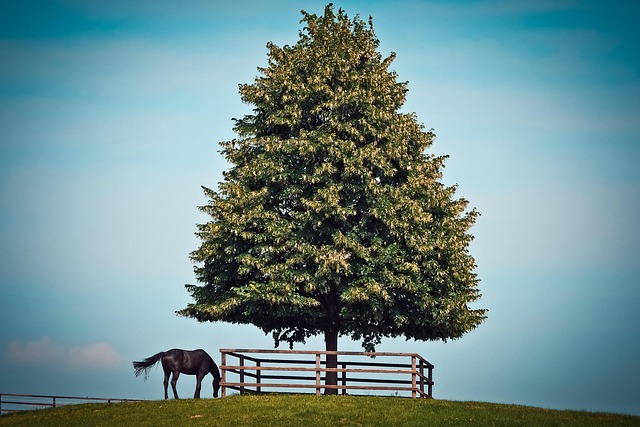Large properties present both challenges and opportunities when it comes to fencing. This comprehensive guide explores cost-effective fencing solutions tailored to meet the unique demands of expansive spaces. By delving into understanding crucial cost factors, embracing sustainable and low-maintenance options, exploring DIY creativity, and implementing long-term planning tips, homeowners can enhance their outdoor spaces without breaking the bank. Discover how these strategies transform your property while delivering both functionality and affordability.
- Understanding Cost Factors for Large Properties
- Sustainable & Low-Maintenance Fencing Options
- Creative DIY Solutions for Cost Savings
- Long-Term Value: Planning & Maintenance Tips
Understanding Cost Factors for Large Properties
When considering fencing solutions for large properties, understanding cost factors is essential. The size and scale of the project play a significant role in determining overall expenses. Materials can vary greatly in price depending on the type of fence desired—wood, chain link, vinyl, or iron—with each material having its own set of maintenance requirements that can impact long-term costs. Labor rates also differ based on geographical location and the complexity of installation. For instance, installing a traditional wooden fence might be more labor-intensive and therefore more expensive than a simple chain link fence.
Additionally, there are other considerations beyond materials and labor. Features such as gates, posts, and accessories add to the overall cost. Landscaping and terrain can also affect installation complexity; uneven ground may require additional preparation, impacting project costs. Furthermore, environmental factors like local regulations and permits needed for construction should be factored in, as they can vary by region and contribute to the bottom line.
Sustainable & Low-Maintenance Fencing Options
For large properties, sustainable and low-maintenance fencing options are a smart choice to save time and resources in the long run. One popular option is using recycled or reclaimed materials like wood from sustainable sources. These materials not only reduce environmental impact but also offer a unique aesthetic appeal that can enhance the property’s overall look. Additionally, they require less maintenance compared to traditional fencing, as they are naturally resistant to rot and decay.
Another eco-friendly alternative is opting for living fences or hedges, which provide both privacy and an organic, thriving border. These can be planted along the property lines and regularly pruned to maintain a neat appearance. Living fences offer a dynamic solution that changes with the seasons, providing a natural, sustainable barrier without the need for frequent replacement or maintenance.
Creative DIY Solutions for Cost Savings
Many homeowners on a budget find creative DIY solutions to save costs when fencing large properties. One popular approach is using recycled materials, such as old railway ties or reclaimed wood, which can be transformed into sturdy and aesthetically pleasing fences. These materials are often cheaper than new ones and can be tailored to fit unique property lines.
Another cost-saving strategy involves installing temporary or moveable fences. For instance, chain link fencing or wire mesh can be an affordable option for boundary marking. These types of fences are easily installable and removable, allowing property owners to adjust their layout as needed. Additionally, using natural barriers like hedges or trees can provide both privacy and cost savings, as they require less maintenance than traditional fences.
Long-Term Value: Planning & Maintenance Tips
When considering cost-effective fencing solutions for large properties, it’s crucial to think beyond initial installation costs and focus on long-term value. While some materials may seem more expensive upfront, their durability and longevity can significantly reduce replacement or repair needs over time. Regular maintenance plays a vital role in extending the life of your fence. Planning for periodic inspections, cleaning, and repairs ensures that any issues are addressed promptly, preventing minor problems from escalating into costly fixes.
A well-maintained fence not only preserves its aesthetic appeal but also maintains its functional integrity. Consider establishing a routine maintenance schedule, including checking for loose or damaged boards, repairing or replacing them as needed, and treating the fence against rot, rust, or pest infestations. Additionally, keeping the area around the fence clear of debris and overgrowth can go a long way in ensuring its longevity and reducing the need for frequent repairs.
